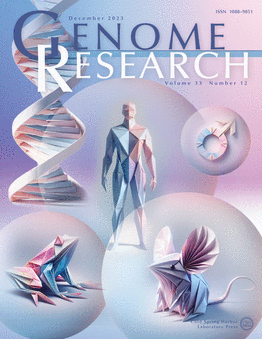易损运动神经元特有的转录调节可预测跨物种和SOD1突变的ALS
IF 5.5
2区 生物学
Q1 BIOCHEMISTRY & MOLECULAR BIOLOGY
引用次数: 0
摘要
肌萎缩侧索硬化症(ALS)的特征是支配骨骼肌的运动神经元(MNs)的进行性丧失。然而,某些MN组,包括眼MN,相对有弹性。为了揭示ALS中恢复力与脆弱性的关键驱动因素,我们使用LCM-seq和单分子荧光原位杂交技术研究了SOD1G93A ALS小鼠中四个不同MN群体的转录动力学。我们发现有弹性的眼部MNs在对疾病的反应中调节很少的基因。相反,它们表现出包括En1、Pvalb、Cd63和Gal在内的神经保护因子的高基线基因表达,其中一些易感MNs在疾病期间上调。易损运动神经元组上调对ALS的有害和再生反应,并共享通路激活,表明易损神经元通过相似的机制发生破坏,尽管时间不同。通过对4个啮齿动物SOD1 MN突变体转录组数据集的荟元分析,发现了39个基因的共享漏洞代码,包括Atf4、Nupr1、Ddit3和Penk,这些基因参与细胞凋亡以及由Atf3、Vgf、Ina、Sprr1a、Fgf21、Gap43、Adcyap1和Mt1组成的促再生和抗凋亡特征。利用SOD1G93A脊髓MN基因上调的机器学习预测人类干细胞来源的SOD1E100G MN的疾病,并表明VGF、INA和PENK的失调是跨物种和SOD1突变的强大疾病预测因子。我们的研究揭示了MN群体特异性基因表达和时间疾病诱导的调节,共同为解释ALS选择性易感性和恢复力提供了基础,并可用于预测疾病。本文章由计算机程序翻译,如有差异,请以英文原文为准。
Transcriptional modulation unique to vulnerable motor neurons predicts ALS across species and SOD1 mutations
Amyotrophic lateral sclerosis (ALS) is characterized by the progressive loss of motor neurons (MNs) that innervate skeletal muscles. However, certain MN groups including ocular MNs, are relatively resilient. To reveal key drivers of resilience versus vulnerability in ALS, we investigate the transcriptional dynamics of four distinct MN populations in SOD1G93A ALS mice using LCM-seq and single molecule fluorescent in situ hybridization. We find that resilient ocular MNs regulate few genes in response to disease. Instead, they exhibit high baseline gene expression of neuroprotective factors including En1, Pvalb, Cd63 and Gal, some of which vulnerable MNs upregulate during disease. Vulnerable motor neuron groups upregulate both detrimental and regenerative responses to ALS and share pathway activation, indicating that breakdown occurs through similar mechanisms across vulnerable neurons, albeit with distinct timing. Meta-analysis across four rodent mutant SOD1 MN transcriptome datasets identify a shared vulnerability code of 39 genes including Atf4, Nupr1, Ddit3, and Penk, involved in apoptosis as well as proregenerative and anti-apoptotic signature consisting of Atf3, Vgf, Ina, Sprr1a, Fgf21, Gap43, Adcyap1, and Mt1. Machine learning using genes upregulated in SOD1G93A spinal MN predicts disease in human stem cell-derived SOD1E100G MNs, and shows that dysregulation of VGF, INA, and PENK are strong disease-predictors across species and SOD1 mutations. Our study reveals MN population-specific gene expression and temporal disease-induced regulation that together provide a basis to explain ALS selective vulnerability and resilience and that can be used to predict disease.
求助全文
通过发布文献求助,成功后即可免费获取论文全文。
去求助
来源期刊

Genome research
生物-生化与分子生物学
CiteScore
12.40
自引率
1.40%
发文量
140
审稿时长
6 months
期刊介绍:
Launched in 1995, Genome Research is an international, continuously published, peer-reviewed journal that focuses on research that provides novel insights into the genome biology of all organisms, including advances in genomic medicine.
Among the topics considered by the journal are genome structure and function, comparative genomics, molecular evolution, genome-scale quantitative and population genetics, proteomics, epigenomics, and systems biology. The journal also features exciting gene discoveries and reports of cutting-edge computational biology and high-throughput methodologies.
New data in these areas are published as research papers, or methods and resource reports that provide novel information on technologies or tools that will be of interest to a broad readership. Complete data sets are presented electronically on the journal''s web site where appropriate. The journal also provides Reviews, Perspectives, and Insight/Outlook articles, which present commentary on the latest advances published both here and elsewhere, placing such progress in its broader biological context.
 求助内容:
求助内容: 应助结果提醒方式:
应助结果提醒方式:


